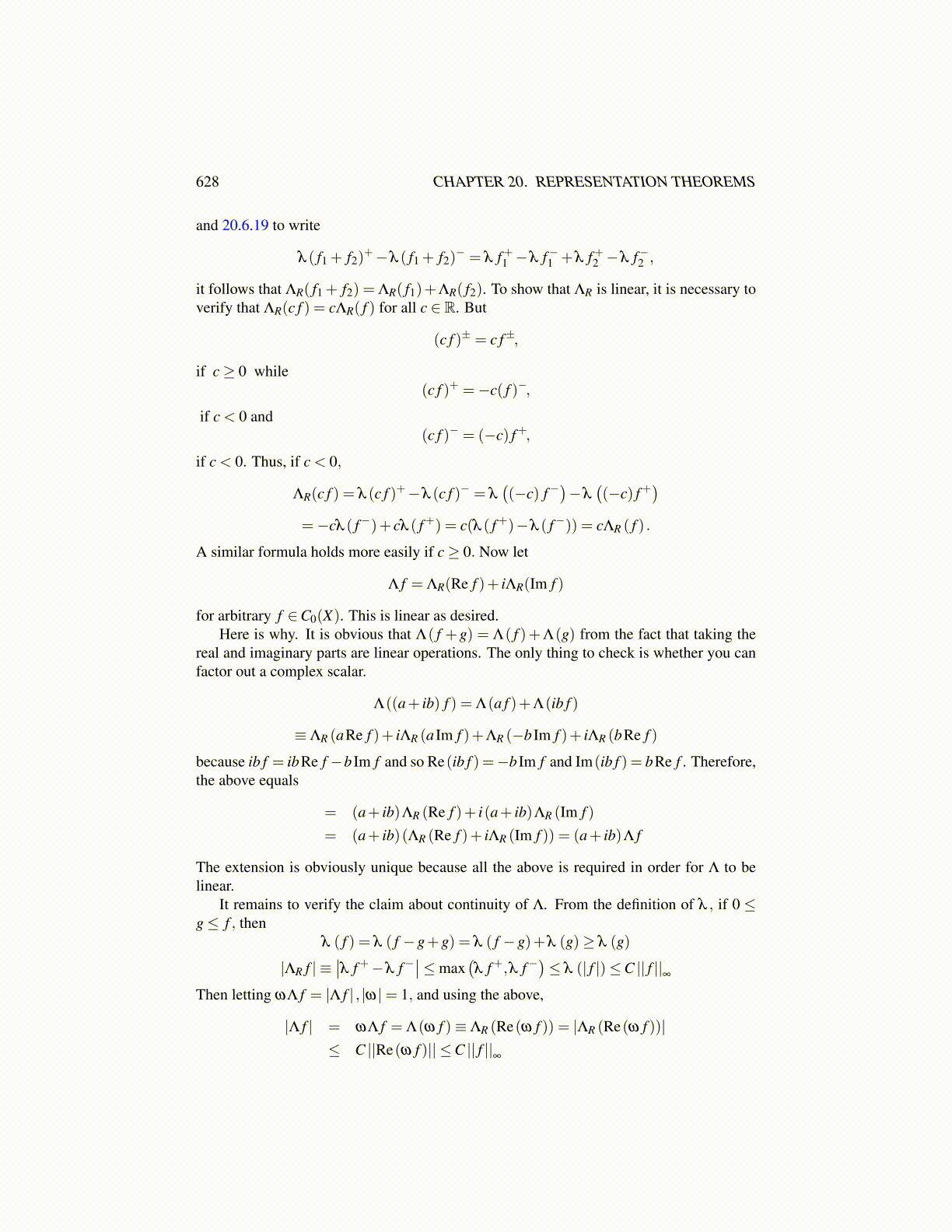
628 CHAPTER 20. REPRESENTATION THEOREMS
and 20.6.19 to write
λ ( f1 + f2)+−λ ( f1 + f2)
− = λ f+1 −λ f−1 +λ f+2 −λ f−2 ,
it follows that ΛR( f1 + f2) = ΛR( f1)+ΛR( f2). To show that ΛR is linear, it is necessary toverify that ΛR(c f ) = cΛR( f ) for all c ∈ R. But
(c f )± = c f±,
if c≥ 0 while(c f )+ =−c( f )−,
if c < 0 and(c f )− = (−c) f+,
if c < 0. Thus, if c < 0,
ΛR(c f ) = λ (c f )+−λ (c f )− = λ((−c) f−
)−λ
((−c) f+
)=−cλ ( f−)+ cλ ( f+) = c(λ ( f+)−λ ( f−)) = cΛR ( f ) .
A similar formula holds more easily if c≥ 0. Now let
Λ f = ΛR(Re f )+ iΛR(Im f )
for arbitrary f ∈C0(X). This is linear as desired.Here is why. It is obvious that Λ( f +g) = Λ( f )+Λ(g) from the fact that taking the
real and imaginary parts are linear operations. The only thing to check is whether you canfactor out a complex scalar.
Λ((a+ ib) f ) = Λ(a f )+Λ(ib f )
≡ ΛR (aRe f )+ iΛR (a Im f )+ΛR (−b Im f )+ iΛR (bRe f )
because ib f = ibRe f −b Im f and so Re(ib f ) =−b Im f and Im(ib f ) = bRe f . Therefore,the above equals
= (a+ ib)ΛR (Re f )+ i(a+ ib)ΛR (Im f )
= (a+ ib)(ΛR (Re f )+ iΛR (Im f )) = (a+ ib)Λ f
The extension is obviously unique because all the above is required in order for Λ to belinear.
It remains to verify the claim about continuity of Λ. From the definition of λ , if 0 ≤g≤ f , then
λ ( f ) = λ ( f −g+g) = λ ( f −g)+λ (g)≥ λ (g)
|ΛR f | ≡∣∣λ f+−λ f−
∣∣≤max(λ f+,λ f−
)≤ λ (| f |)≤C || f ||
∞
Then letting ωΛ f = |Λ f | , |ω|= 1, and using the above,
|Λ f | = ωΛ f = Λ(ω f )≡ ΛR (Re(ω f )) = |ΛR (Re(ω f ))|≤ C ||Re(ω f )|| ≤C || f ||
∞